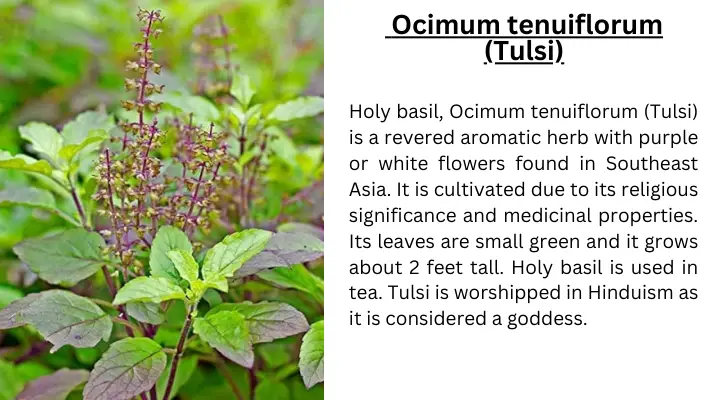





AYURVEDIC
Ayurveda is an ancient Indian system of medicine that is about 5000 years old. The word ‘Ayurveda’ means ‘knowledge of life’ (Ayu = life, Veda = knowledge). It emphasizes harmonious care of the body, mind, and spirit. Ayurvedic medicine mainly uses natural elements such as herbs, metals, and minerals. The Ayurvedic system is based on the theory of three doshas – Vata, Pitta, and Kapha which are considered important for health to be balanced. Ayurveda also uses “panchakarma”, yoga, meditation, and special diets for the diagnosis and treatment of disease. It focuses not only on the treatment of diseases but also on the prevention of diseases and promotion of overall health. Today, Ayurvedic medicine is gaining recognition globally. Treatment involves a variety of natural methods such as:
Various methods of Ayurvedic treatment
1. Panchakarma: The Art of Deep Detoxification
Panchakarma is Ayurveda’s signature detoxification therapy. It is a five-step purification process designed to remove toxins (Ama) from the body, cleanse the organs, and rejuvenate the system. The five main therapies include:
• Vamana (Therapeutic Emesis) – A controlled vomiting procedure that expels excess Kapha and detoxifies the respiratory and digestive systems.
• Virechana (Purgation Therapy) – Uses natural purgatives to cleanse the liver, gallbladder, and intestines, balancing excess Pitta.
• Basti (Medicated Enema) – A crucial therapy for eliminating deep-seated toxins, especially for Vata imbalances.
• Nasya (Nasal Cleansing) – Involves the administration of medicated oils into the nasal passages, clearing toxins from the head and neck region.
• Raktamokshana (Bloodletting) – A specialized therapy to purify the blood and treat skin disorders, hypertension, and inflammation.
This powerful method not only detoxifies the body but also rejuvenates the soul, leaving individuals with renewed energy and vitality.
2. Abhyanga: The Healing Touch of Ayurvedic Massage
There is something deeply nurturing about touch, and Abhyanga, the Ayurvedic oil massage, embodies this principle. This full-body massage with warm herbal oils nourishes the skin, improves circulation, and calms the nervous system. The choice of oil is personalized based on one’s Dosha:
• Vata types benefit from heavy, warm oils like sesame or almond oil.
• Pitta types find cooling coconut or sunflower oil soothing.
• Kapha types need stimulating oils like mustard or eucalyptus.
Regular Abhyanga promotes relaxation, improves joint mobility, and enhances emotional well-being. It is more than a massage—it is an act of self-love and care.

3. Shirodhara: A Flow of Serenity
Shirodhara is a deeply meditative therapy where a steady stream of warm oil is poured over the forehead, specifically targeting the third-eye chakra. This treatment calms the mind, alleviates stress, and helps with insomnia, anxiety, and mental fatigue. As the oil flows, it gently washes away tension, bringing a profound sense of peace and balance.

4. Swedana: The Purifying Power of Herbal Steam
Swedana is an herbal steam therapy that opens up the pores, allowing the body to release toxins through sweat. It is often used in conjunction with Abhyanga to enhance detoxification. The warmth penetrates deep into the tissues, reducing muscle stiffness, improving circulation, and providing a feeling of lightness and relaxation
5. Ayurvedic Diet: Food as Medicine
- Ayurveda teaches that food is not just fuel—it is medicine. Every meal is an opportunity to heal and nourish the body. Ayurveda emphasizes eating according to one’s Dosha to maintain balance:
• Vata individuals thrive on warm, moist, and grounding foods like soups, stews, and cooked grains.
• Pitta individuals need cooling and hydrating foods like sweet fruits, leafy greens, and dairy.
• Kapha individuals benefit from light, dry, and spicy foods that stimulate metabolism.
Beyond Dosha-based eating, Ayurveda recommends mindful eating—chewing food properly, eating in a calm environment, and savoring every bite. Food prepared with love and consumed with awareness transforms into pure nourishment.
6. Herbal Medicine: The Gifts of Nature
Herbs are the heart of Ayurveda. These natural healers work in harmony with the body, restoring balance and strengthening immunity. Some of the most powerful Ayurvedic herbs include:
• Ashwagandha – A rejuvenating adaptogen that reduces stress and boosts vitality.
• Triphala – A combination of three fruits that supports digestion and detoxification.
• Turmeric – A potent anti-inflammatory that enhances immunity and skin health.
• Brahmi – A brain tonic that improves memory and mental clarity.
Ayurvedic practitioners tailor herbal remedies based on an individual’s unique constitution, ensuring the most effective healing experience.

7. Yoga and Pranayama: Breath and Movement for Balance
Yoga and Ayurveda are deeply intertwined. While Ayurveda provides dietary and lifestyle guidelines, Yoga complements it by enhancing physical and mental well-being. Specific Yoga postures (Asanas) balance the Doshas:
• Vata types benefit from grounding poses like Tree Pose and Child’s Pose.
• Pitta types find cooling poses like Moon Salutation and Cobra Pose helpful.
• Kapha types thrive with invigorating poses like Sun Salutation and Warrior Pose.
Breathwork (Pranayama) is equally crucial. Techniques like Nadi Shodhana (Alternate Nostril Breathing) help calm the mind, while Kapalabhati (Skull Shining Breath) energizes the body. Through movement and breath, Ayurveda and Yoga together create a powerful synergy for holistic healing.

8. Daily Routines (Dinacharya): The Rhythm of Wellness
Ayurveda emphasizes the importance of a structured daily routine (Dinacharya) to maintain harmony with nature’s cycles. A balanced routine includes:
• Waking up early (preferably before sunrise)
• Drinking warm water with lemon to stimulate digestion
• Practicing self-massage (Abhyanga)
• Engaging in Yoga and meditation
• Eating meals at regular times
• Sleeping early to align with the body’s natural rhythms
When followed consistently, Dinacharya instills discipline, enhances longevity, and fosters inner peace.
9. Rasayana Therapy: The Science of Rejuvenation
Rasayana is the Ayurvedic approach to anti-aging and longevity. This method involves:
• Consuming rejuvenating herbs like Chyawanprash (a herbal jam packed with antioxidants)
• Practicing a sattvic (pure) diet
• Engaging in positive thoughts and relationships
• Cultivating self-awareness and gratitude
Rasayana therapy doesn’t just extend life—it enhances its quality, making every moment vibrant and meaningful
Benefits of Ayurvedic Treatment
1. Natural Healing Without Harmful Side Effects
One of the most beautiful aspects of Ayurveda is its reliance on natural remedies. Unlike synthetic drugs, which often come with a long list of side effects, Ayurvedic treatments use herbs, oils, and minerals that work in harmony with the body. These remedies are carefully chosen based on an individual’s unique constitution (Prakriti) and doshic balance, ensuring a personalized and effective healing approach.
2. Holistic Healing: Body, Mind, and Soul
Modern medicine often isolates symptoms and treats them separately, but Ayurveda understands that true healing requires a holistic approach. Emotional stress can manifest as physical ailments, and an imbalanced body can lead to mental unrest. By addressing the root cause rather than just the symptoms, Ayurveda promotes deep, lasting healing.
3. Digestive Health and Metabolism Enhancement
“You are what you digest.” Ayurveda places immense emphasis on digestive health, considering it the foundation of overall well-being. A weak digestive system can lead to toxin accumulation, sluggish metabolism, and various illnesses. Ayurvedic dietary recommendations and herbal supplements like Triphala, ginger, and turmeric help optimize digestion and boost metabolism, allowing the body to absorb nutrients effectively and eliminate waste efficiently.
4. Strengthening the Immune System
In today’s world, where we are constantly exposed to pollutants and pathogens, a strong immune system is our greatest defense. Ayurveda provides natural ways to enhance immunity through potent herbs like Ashwagandha, Tulsi, and Amalaki. These herbs not only protect against infections but also improve overall energy levels, making the body resilient and vibrant.
5. Stress Relief and Emotional Balance
Life can be overwhelming. The pressures of work, relationships, and societal expectations can drain our emotional well-being. Ayurveda offers gentle yet powerful practices to restore emotional balance. Meditation, yoga, Pranayama (breathwork), and adaptogenic herbs help calm the nervous system, reduce cortisol levels, and bring a deep sense of inner peace. Imagine waking up each day with a clear mind and a heart full of joy—this is the gift of Ayurveda.
6. Detoxification and Rejuvenation
We unknowingly accumulate toxins from the food we eat, the air we breathe, and even the thoughts we entertain. Ayurvedic detoxification, known as Panchakarma, is a profound cleansing process that eliminates toxins from the body, restores balance, and rejuvenates the tissues. After a Panchakarma cleanse, people often report feeling lighter, more energetic, and mentally refreshed.
7. Glowing Skin and Healthy Hair
True beauty is not just skin deep—it radiates from within. Ayurveda recognizes that a healthy body reflects on the outside, leading to clear skin and lustrous hair. Herbal formulations with neem, sandalwood, and saffron help purify the skin, while oils like coconut and Brahmi nourish the scalp and prevent hair fall. When the body is in balance, beauty follows effortlessly.
8. Improved Sleep Quality
In a world of endless notifications and overactive minds, sleep disorders have become alarmingly common. Ayurveda offers a natural way to combat insomnia and improve sleep quality. Practices such as drinking warm milk infused with nutmeg, using essential oils like lavender, and following a calming nighttime routine help in achieving deep, restorative sleep.
9. Personalized Healthcare
No two individuals are the same, and Ayurveda acknowledges this beautifully. Unlike the one-size-fits-all approach of modern medicine, Ayurveda tailors treatments according to an individual’s unique constitution. Whether you are predominantly Vata, Pitta, or Kapha, Ayurveda offers dietary, lifestyle, and herbal recommendations that cater specifically to your needs, ensuring optimal health.
10. Chronic Disease Management
From diabetes to arthritis, Ayurveda has been successfully used for centuries to manage chronic illnesses. Unlike conventional treatments that often focus on suppressing symptoms, Ayurveda seeks to eliminate the root cause of disease by balancing the body’s energies. With a combination of herbs, dietary adjustments, and therapies, Ayurveda helps individuals regain control over their health and improve their quality of life.
11. Weight Management Without Harsh Diets
Forget crash diets and extreme weight-loss plans—Ayurveda promotes sustainable and natural weight management. By understanding your body type and eating in alignment with your dosha, you can achieve a healthy weight effortlessly. Ayurvedic practices encourage mindful eating, detoxification, and metabolism-boosting herbs like Guggul and Triphala to support healthy weight loss.
12. Emotional Healing and Spiritual Growth
Beyond physical well-being, Ayurveda nurtures emotional and spiritual growth. It encourages self-awareness, mindfulness, and a deep connection with nature. When we align ourselves with Ayurvedic principles, we develop a greater appreciation for life, leading to a profound sense of purpose and fulfillment
Conclusion
People Also Know :
What are the best foods according to Ayurveda?

